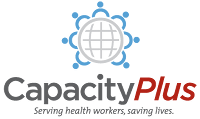Staffing Ratio
Baseline and Work Load Indicator Assessment for Community Health Workforce: A Case of Selected Community Units in Nyanza and Coast Regions
This study sought to assess the staff requirements, work load and performance with respect to the CH work force
using workload indicator of staffing need (WISN) tool. The ultimate objective was to provide information to guide the organization, management and development of the work force. [from abstract]
- 818 reads
Availability of Medical Staff in Poland in Comparison to Other EU Countries
Access to medical staff differs across Europe. In 2011, the country that had the smallest number of physicians in all European Union was Poland. During last ten years, the number of doctors per capita increased in all European countries except Poland and Estonia. The aim of the study is to analyse the availability of medical staff in Poland and selected EU countries in the years 2003-2011. [from abstract]
- 633 reads
The Use of Special and Emergency Hiring Approaches in Health Systems
Special and emergency hiring programs entail the use of processes and mechanisms that are outside of the primary, nationally institutionalized human resource frameworks. Specifically, we sought to assess whether these approaches avert some of the challenges that undercut optimal deployment, long-term retention, and the rational assignment of transfers. Do efforts outside of the “regular” system bypass the P&T challenges of the “normal” system? Why? [from introduction]
- 567 reads
The Study of the Rational Allocatio n of China’s Human Resources for Health
Through the supply and demand of China’s human resources for health status, age structure, educational level of existing health professionals and other aspects of statistical analysis to understand the current situation of China’s
health human resources, so as to put forward the healthy development of health human resource allocation optimization suggestions, and provide the basis for the formulation of relevant policies. [from abstract]
- 763 reads
Applying the Workload Indicators of Staffing Need (WISN) Method in Namibia: Challenges and Implications for Human Resources for Health Policy
As part of ongoing efforts to restructure the health sector and improve health care quality, the Ministry of Health and Social Services (MoHSS) in Namibia sought to update staffing norms for health facilities. To establish an evidence base for the new norms, the MoHSS supported the first-ever national application of the Workload Indicators of Staffing Need (WISN) method, a human resource management tool developed by the World Health Organization. [from abstract]
- 1041 reads
Team-building Approach to improve Maternity Services - A Midwife's Experience
A team-building approach was taken to engage the maternity ward in reviewing current practices, and identifying activities to strengthen midwifery services. [from introduction] Story is near bottom of page.
- 878 reads
Nursing and Midwife Staffing Needs in Maternity Wards in Burkina Faso Referral Hospitals
The aim of this study was to measure the capacity of referral hospitals’ maternity services to cope with the demand for health services after the implementation of this policy. [from abstract]
- 825 reads
Construction of a Decision Tool to Analyze Local Demand and Local Supply for GP Care Using a Synthetic Estimation Model
This study addresses the growing academic and policy interest in the appropriate provision of local healthcare services to the healthcare needs of local populations to increase health status and decrease healthcare costs. The research goal is to examine the construction of a decision tool which enables healthcare planners to analyse local supply and demand in order to arrive at a better match. [from abstract]
- 673 reads
Impact of Nurse Working Hours on Patient Safety Culture: A Cross-National Survey Including Japan, the United States and Chinese Taiwan Using the Hospital Survey on Patient Safety Culture
The purpose of this study was to clarify the impact of long nurse working hours on patient safety culture in Japan, the US, and Chinese Taiwan using the Hospital Survey on Patient Safety Culture assessment tool. [adapted from abstract]
- 918 reads
Applying WHO's Workforce Indicators of Staffing Need (WISN) Method to Calculate the Health Worker Requirements for India's Maternal and Child Health Service Guarantees in Orissa State
In one district of India, the authors used the WISN method to calculate the number of health workers required to achieve the maternal and child health service guarantees of the country and measured the difference between this ideal number and current staffing levels. [adapted from abstract]
- 897 reads
Workforce Planning Tool: User's Guide
This tool collects data related to the current size of staff by position and the facility workload for each department. It then uses worker activity standards developed by Egyptian expert panels to calculate the precise workforce required to meet the workload of each facility. The tool’s output capabilities display the size of the gaps between current and required staff, examined across facilities, specialty areas, and types of worker, as well as among specialties within a facility. [from author]
- 2194 reads
User's Manual for Developing a Workload-Based Staffing Model in Egypt
This manual is a how-to guide to the workload indicators of staffing need (WISN) process and its implementation in Egypt. It provides a
step-by-step review of the WISN method and the calculations used in the analysis of the workforce to determine staffing needs. This guide is largely based on the Egyptian experience with the WHO methodology and how it was tailored to meet Egypt’s specific context and needs. [from introduction]
- 1483 reads
Association between Nurse Staffing and Hospital Outcomes in Injured Patients
The enormous fiscal pressures facing trauma centers may lead trauma centers to reduce nurse staffing and to make increased use of less expensive and less skilled personnel. The goal of this study was to examine whether nurse staffing levels and nursing skill mix are associated with trauma patient outcomes. [from abstract]
- 1186 reads
Variation in Cancer Surgical Outcomes Associated with Physician and Nurse Staffing: A Retrospective Observational Study Using the Japanese Diagnosis Procedure Combination Database
This study aimed to investigate the association between cancer surgical outcomes and physician/nurse staffing in relation to hospital volume. [from abstract]
- 1025 reads
Measuring Workload for Tuberculosis Service Provision at Primary Care Level: A Methodology
This article describes a methodology developed to establish tuberculosis (TB) related work load in a given context and for a given patient load for use by TB program managers and health planners. The authors piloted this methodology in Tanzania in three districts; one rural, one urban and one semi-urban district as the countrycurrently faces a health workforce shortage of 65% in the public sector and 86% in the private sector, with unequal distribution between urban and rural areas. [adapted from author]
- 979 reads
Staffing for Safety: A Synthesis on the Evidence on Nurse Staffing and Patient Safety
Research reveals a close link between inappropriate nurse staffing levels and higher rates of unwanted outcomes for patients. This report highlights evidence-informed recommendations for improvements in patient outcomes through advancements in nurse staffing. [from summary]
- 1361 reads
Using the Workload Indicator of Staffing Needs (WISN) Methodology to Assess Work Pressure among the Nursing Staff of Lacor Hospital
This paper demonstrates the use of the workload indicator of staffing needs methodology in determining staffing requirements for the nursing staff in a hospital setting. It shows how the results can be used to assess overstaffing and understaffing as well as determine the work pressure among the different categories of nurses thus providing a basis for effective nurse redistribution to exploit efficiency gains without compromising the quality of services. [from abstract]
- 2349 reads
Predicting the Demand of Physician Workforce: An International Model Based on "Crowd Behaviors"
To calculate an appropriate number of Physician Density (PD) for a specific country, this study was designed to create a PD prediction model, based on health-related data from many countries. [from abstract]
- 1447 reads
Nurse Staffing, Direct Nursing Care Hours and Patient Mortality in Taiwan: The Logitudinal Analysis of Hospital Nurse Staffing and Patient Outcome Study
This study aimed to provide an overview of the research which has clarified the relationship between nurse staffing and patient mortality of acute care hospital wards under a universal health insurance system and attempted to provide explanations for some of the phenomena that are unique in Taiwan. [from abstract]
- 1511 reads
Using Staffing Ratios for Workforce Planing: Evidence on Nine Allied Health Professions
The aim of this study was to identify workforce ratios in nine allied health professions and to identify whether these measures are useful for planning allied health workforce requirements. [from abstract]
- 1908 reads
Service Targets Staff Projection Tool: User Guide
The Service Target Staffing Projection Tool is designed to estimate the workforce required to deliver an agreed package of health services. The tool helps to set targets for production and recruitment of staff based on assumptions concerning the staff required at each level of the health system. [from author]
- 2378 reads
How Many Doctors Do We Need in Sudan?
The aim of this paper is to propose a scientific estimation of Sudan’s need for doctors in strategic terms by: projecting estimated figures to reach the average standards of doctor-population ratios in the region; projecting annual graduation and postgraduate training rates; proposing estimates of the number of doctors the state economy can support; suggesting meastures to optimize distribution in different speacialties and geographic zones and to manage migration. [adapted from author]
- 1686 reads
Staffing in Maternity Units: Getting the Right People in the Right Place at the Right Time
This report considers the available evidence about the relationship between staffing levels and deployment practices and safety of care for mothers and babies. In so doing, the report considers different staffing models and approaches.
- 12945 reads
Workload Indicators of Staffing Need (WISN)
The Workload Indicators of Staffing Need (WISN) method is a human resource management tool. It provides health managers a systematic way to make staffing decisions in order to manage their valuable human resources.
- 7474 reads
Density of Healthcare Providers and Patient Outcomes: Evidence from a Nationally Representative Multi-Site HIV Treatment Program in Uganda
This article examined the association between density of healthcare providers and patient outcomes using a large nationally representative cohort of patients receiving combination antiretroviral therapy in Uganda. [from abstract]
- 2041 reads
WISN: a Workforce Planning Tool with Unexpected Motivational Benefits
In Indonesia, a bottom-up workforce planning tool used with health workers directly has changed practice, realigned health workers’ roles, and increased motivation among staff. It shows how effective empowerment can be in the workplace. Workload Indicators of Staffing Need, or WISN, is straightforward and easily applied. [from author]
- 3415 reads
WISN Toolkit: Toolkit for Implementing Workload Indicators of Staffing Need (WISN) to Improve Health Workforce Planning and Management in Decentralized Health Systems
The Toolkit is adapted from the WHO WISN Manual. WISN has traditionally been in a top down approach with limited success, particularly when applying it within the context of a decentralized government system. It was recognized that a more innovative approach was required to implement the methodology successfully at decentralized levels. [from author]
- 9934 reads
Staff/Population Ratios in South African Public Sector Mental Health Services
This article reports on cross-sectional survey documenting staff/population ratios in public sector mental health services in South Africa. [from abstract]
- 2539 reads
Staff/Bed and Staff/Patient Ratios in South African Public Sector Mental Health Services
This article reports on cross-sectional survey documenting staff/bed ratios in public sector mental health services in South Africa. [from abstract]
- 3431 reads
Human Resource Requirements for Introducing Cervical Screening — Who Do We Need Where?
This article discusses the estimated requirements and imbalances of province-specific health personnel required for introducing cervical screening in South Africa. [adapted from introduction]
- 2428 reads




